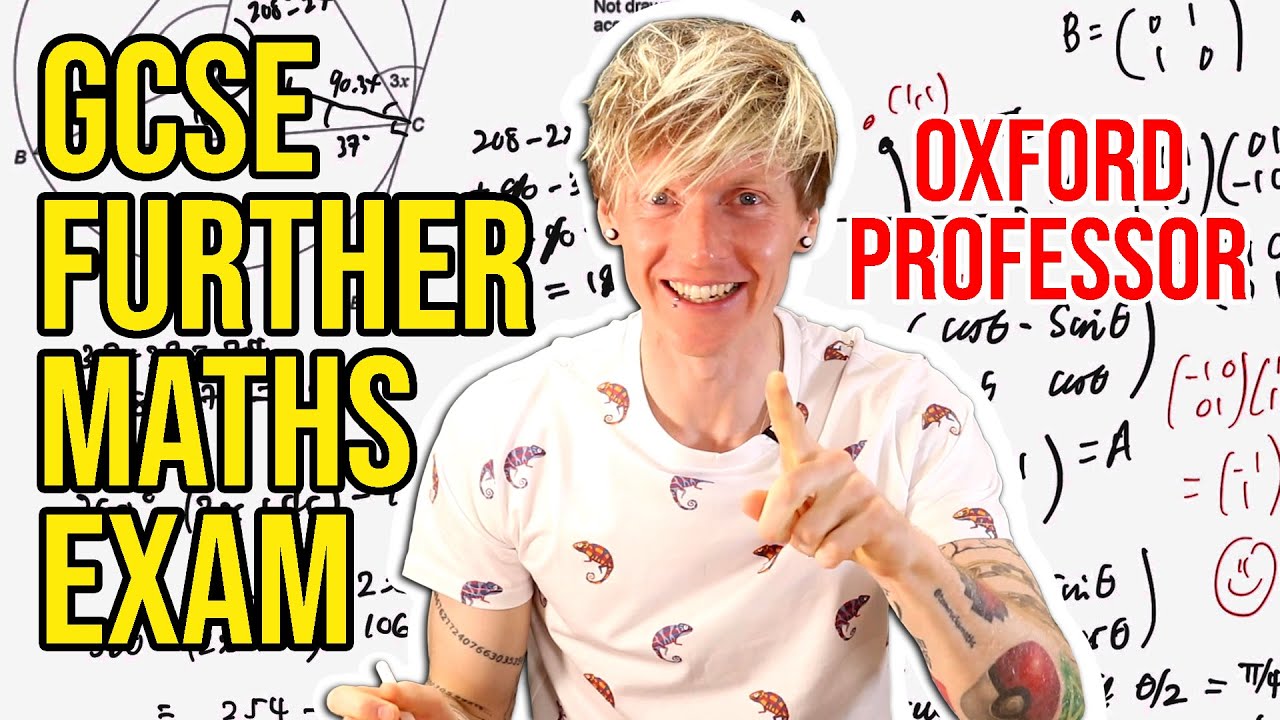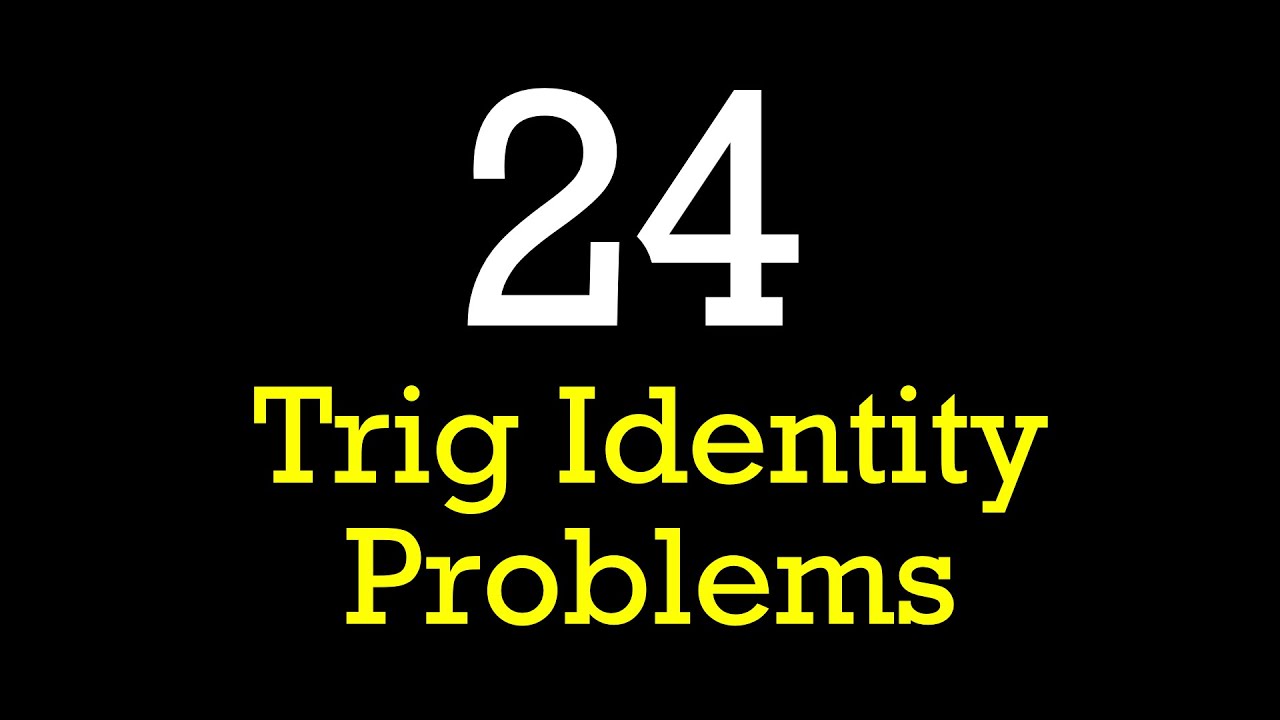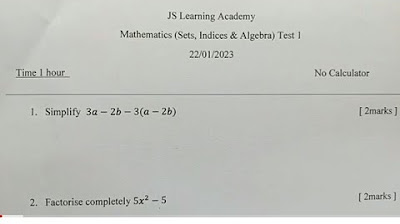GCSE Maths Paper 3 Foundation in 20 Minutes!
TLDRThis video script is an educational walkthrough of an AQA GCSE Maths Foundation Paper 3, offering detailed explanations and solutions to various mathematical problems. It covers topics such as rounding to decimal places, percentage calculations, congruency in geometry, algebraic expressions, probability, and pie charts. The script also guides viewers on how to use number cards for calculations, determine the cost savings of bulk ticket purchases, and apply Pythagoras' Theorem. Additional problems involve converting units of speed, calculating the mean and probability in a data set, and graphing linear equations. The presenter emphasizes the importance of understanding mathematical concepts and provides a step-by-step approach to solving each question. The video concludes with a special offer for a revision tool to assist with GCSE exam preparation.
Takeaways
- 📐 **Decimal Places**: To round a number to two decimal places, look at the third decimal place. If it's 5 or more, round up.
- 💰 **Percentage Calculation**: To find the whole number when a percentage is given, use the percentage as a fraction of 100.
- 🔄 **Congruency in Shapes**: Two shapes are congruent if they are identical in shape and size, even if they are rotated or flipped.
- 📏 **Multiplication with Number Cards**: To make a multiple of ten, multiply the digits on the cards and adjust to end with a zero.
- 🛒 **Saving for a Purchase**: Calculate the number of weeks needed to save by dividing the remaining amount by the weekly savings.
- 🔢 **Algebraic Expressions**: Distinguish between an equation (has an equals sign) and an expression (does not have an equals sign).
- 🏃 **Combining Teams**: To form teams with specific criteria, list all possible combinations that meet the requirements.
- 🏃♀️ **Race Statistics**: Calculate the number of participants who finished or did not finish a race using given percentages and totals.
- 📏 **Units of Measurement**: Convert between different units of length, such as kilometers to meters, ensuring to use the correct conversion factors.
- 📈 **Pie Charts**: Complete a pie chart by calculating the missing angles based on the given percentages and the total degrees in a circle.
- 🎟️ **Ticket Pricing**: Compare the cost of individual tickets versus a special offer to determine the most cost-effective option.
- 📉 **Discount Calculation**: When a discount is applied, calculate the final price by multiplying the original price by the discount factor.
- ✅ **Positive Results**: The square of any real number is always positive, regardless of whether the original number was positive or negative.
- 📈 **Graphing Linear Functions**: Plot points on a graph based on a linear function and use the graph to convert between different units of speed.
- 📊 **Mean Calculation**: Find the mean number of days absent by summing the products of the number of days and the frequency of each, then dividing by the total number of students.
- 🎓 **Probability**: Calculate the probability of a random event by dividing the number of favorable outcomes by the total number of possible outcomes.
- 💵 **Value of Notes**: Write a formula for the total value of notes in terms of a variable representing the number of notes of a certain denomination.
- 🏗️ **Drawing Elevations**: Use the dimensions provided in a side elevation and plan to draw the front elevation of a cuboid.
- 📐 **Parallel Lines**: Identify the equation of a line parallel to another by comparing the slopes (gradients).
- 🔍 **Locating a Path**: Use the concept of loci to determine the possible positions of a path that is equidistant from two given points.
- 📐 **Pythagoras Theorem**: Use the theorem to calculate the length of the hypotenuse when the lengths of the other two sides are known.
- 🚴 **Speed and Distance**: Calculate the speed for a part of a journey when the time and distance are known.
- 🔼 **Scaling Similar Triangles**: Determine the scale factor of similar triangles and use it to find the measure of unknown sides.
- 🏡 **Median and Mode**: Given the median and total number of houses, deduce the possible values for the number of bedrooms in the houses.
- 🔢 **Perimeter Calculation**: Calculate the new perimeter of a rectangle after changes in length and width, and compare it to the original to find the percentage decrease.
- 📝 **Expanding Expressions**: Expand algebraic expressions by applying the distributive property and combining like terms.
- 🔢 **Simplifying Algebra**: Simplify algebraic expressions by combining terms and applying arithmetic operations.
Q & A
What is the rounded value of 6.219 to two decimal places?
-When rounding to two decimal places, you look at the third decimal place. Since it is a 1, it does not affect the second decimal place (8), so the rounded value is 6.28.
If 50% of a number is 40, what is the whole number?
-If 50% represents 40, then the whole number (100%) would be twice that amount, which is 80.
Which two shapes on a square grid are congruent?
-Shapes A and C are congruent because they have the same size and shape, differing only by a rotation.
How do you calculate a multiple of ten using three number cards?
-To make a multiple of ten, you would use the cards to create the number 38 (since 8 times 5 equals 40, which ends in zero).
What is the single digit number when you use all three cards for a calculation?
-The calculation would be 3 times 5, which equals 15, and then subtracting 8 gives you 7.
What is the result of the calculation using all three cards as 6 plus 5 and then 8 plus 3?
-The calculation is 6 + 5 equals 11, and 8 + 3 equals 11, so the result is 11 over 11, which simplifies to 1.
How many weeks will Greg save enough to buy the games console costing £267.50 if he saves £7.50 each week?
-Greg already has £125, so he needs to save an additional £142.50. Dividing this by his weekly savings of £7.50 gives 19 weeks.
What is the total number of possible teams that can be formed with one female and one male from a group of people?
-There are six possible teams: A and E, A and R, A and T, L and E, L and R, and L and T.
How many men and women started the race, and how many did not finish?
-There were 500 people in total, with 281 men and the rest women. 80 men finished, so 56 did not. 30 women did not finish, which means 190 women did finish.
What is the order of the given distances in terms of size?
-The distances in order from smallest to largest are 1.6 kilometers, 1.75 kilometers (1750 meters), and 1.8 kilometers (1800 meters).
What is the size of angle X in the triangle with angles measuring 103 and 49 degrees?
-The sum of the angles in a triangle is 180 degrees. So, angle X can be found by subtracting the other two angles from 180: 180 - 103 - 49 = 28 degrees.
How many players answered white when the pie chart represents 600 players and the white sector is 75 degrees?
-Since 360 degrees represent 600 players, each degree represents 600 / 360 = 5/3 players. Therefore, 75 degrees would represent 75 * (5/3) = 125 players.
Outlines
📚 GCSE Maths Foundation Paper 3 Overview
This paragraph introduces a GCSE Maths Foundation Paper 3, covering a range of mathematical problems. It includes rounding numbers to two decimal places, calculating percentages, identifying congruent shapes, performing basic arithmetic with number cards, and solving word problems involving savings and purchasing. It also explores algebra, probability, and pie charts, providing solutions to each problem.
🎟️ Theme Park Ticket Pricing and Graphing Linear Functions
The second paragraph discusses ticket pricing strategies for a theme park, comparing single tickets to a special offer for a group. It also covers the calculation of savings and the application of a discount voucher. Additionally, it presents a formula for converting speed from kilometers per hour to meters per second and vice versa. The paragraph concludes with a statistical analysis of student absences over a term and the probability of a randomly chosen student being absent for less than four days.
📏 Geometry and Graphing
This paragraph delves into geometric problems involving the calculation of the value of notes, the drawing of elevations for a cuboid, and the determination of parallel lines using gradients. It also explores loci problems related to fields and paths, the application of Pythagoras' Theorem, and the conversion of speed units. The paragraph includes a promotional announcement for a partnership with a revision platform offering exam preparation resources.
🚴♂️ Cycling to the Library and Solving Similar Triangles
The final paragraph presents a scenario where a character named Chris cycles to the library and back, with the task of calculating his speed for the return journey. It also involves solving for the value of 'a' in similar triangles by identifying the scale factor. The paragraph further discusses the median in a set of house numbers and the calculation of perimeters after certain percentage decreases. It concludes with algebraic expressions and simplification, rounding off the GCSE paper with a message of thanks and encouragement.
Mindmap
Keywords
💡Decimal Places
💡Percentage
💡Congruency
💡Multiplication
💡Algebraic Expression
💡Pie Chart
💡Probability
💡Graph
💡Speed Conversion
💡Mean
💡Parallel Lines
Highlights
How to round a number to two decimal places by looking at the third decimal place
Calculating the whole number when a percentage of it is given
Identifying congruent shapes on a square grid by rotation
Using number cards to create a multiple of ten and a single digit number
Calculating the number of weeks to save enough money for a games console
Matching algebraic expressions to their descriptions as equations or expressions
Determining all possible teams of one female and one male from a group of people
Calculating the number of men and women who finished and did not finish a race
Converting distances between kilometers, meters and miles
Solving for the size of angle X in a triangle using the sum of angles property
Completing a pie chart by calculating the missing sector sizes
Determining the number of players who answered a certain shirt color on a survey
Calculating the total value of coins given the value of 20p coins
Finding the cheapest way to buy tickets for three adults and four children at a theme park
Calculating the total cost after using a voucher to buy five single adult tickets
Identifying the expression that is always positive when squared
Drawing the graph of a linear function given two points
Converting speed units from kilometers per hour to meters per second
Calculating the mean number of days absent for a group of students
Finding the probability that a randomly chosen student was absent for less than four days
Writing a formula for the total value of notes in terms of a variable
Drawing the front elevation of a cuboid given the side elevation and plan
Identifying the equation of a line parallel to a given line
Determining the position of a path across a field using loci
Using Pythagoras' Theorem to find the length of the hypotenuse
Calculating the speed at which Chris cycles home from the library
Finding the value of a variable in similar triangles using a scale factor
Determining possible values for the number of bedrooms in 26 houses given the median
Calculating the new perimeter of a rectangle after decreasing its length and width
Expanding and simplifying an algebraic expression using the FOIL method
Transcripts
Browse More Related Video

GCSE Maths Edexcel Paper 3 Higher in 20 Minutes!| How to get a Grade 9

Oxford University Mathematician takes High School GCSE Further Maths Exam

Ultimate trig identity problem study guide!

George And James Take GCSE Maths Exam

Sets, Indices, and Algebra Test 1 - JS Learning Academy

Praxis Core Math 5733 | Live | Kathleen Jasper
5.0 / 5 (0 votes)
Thanks for rating: